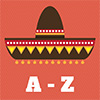 Traditional pieces of the male and female national costumes in Turkey: aigrette, anteri, bademler, başmak, bindalli, binish, çarik, çedik, cepken, çizme, cübbe, don, entari, ferace, fez, gomlek, hirka, iki etek entari, jubba, kaftan, kalpak, kemer, keşan, kushak, kütahya, mest, mintan, peştemal, potur, qamis, salta, sarik, shalvar, tek etek entari, turban, üç etek entari, yasmak, yelek, and zibin.
Traditional pieces of the male and female national costumes in Turkey: aigrette, anteri, bademler, başmak, bindalli, binish, çarik, çedik, cepken, çizme, cübbe, don, entari, ferace, fez, gomlek, hirka, iki etek entari, jubba, kaftan, kalpak, kemer, keşan, kushak, kütahya, mest, mintan, peştemal, potur, qamis, salta, sarik, shalvar, tek etek entari, turban, üç etek entari, yasmak, yelek, and zibin.
Aigrette – head-plumes that decorated turbans and other headdresses of Turkish noble people.
Anteri (anteree, anterija) – short variant of a yelek; vest used by males and females.
Bademler – bridal headdress of Turkish women.
Başmak (basmak) – Turkish footwear; high boots used by both men and women.
Bindalli – ornate women’s dresses for weddings and special occasions. They are made of velvet and decorated with embroidery.
Binish – coat with wide sleeves and front opening that was worn over the kaftan.
Çarik – Turkish footwear; Anatolian moccasins used in the rural areas.
Çedik – traditional woven socks.
Cepken (cebken) – short (waist-length) jacket used by men and women.
Çizme – Turkish footwear; boots.
Cübbe – male middle-length or long robe. It was historically used by middle-class men.
Don – authentic underpants.
Entari – long robe similar to kaftan. It was used by men and women. This garment is one of the main parts of a Turkish attire and is among the oldest outfits of this region.
Ferace – long and baggy outer garment that covers the entire body. There are male feraces and female ones – they differ in design and usage.
Fez – conical skull-cap with a tassel. Its color is traditionally red. It is used by men and women.
Gomlek (gömlek) – unisex shirt, often made from silk. This term is used for a shirt as one of the main garments and for the undershirt as an undergarment.
Hirka – male undercoat; short robe or tunic. It was historically used by middle-class men.
Iki etek entari – female garment; dual-skirt or two-tier entari.
Jubba – male long loose robe.
Kaftan (Caftan) – unisex outerwear; long coat with short or long sleeves. It usually reached the ankles and was buttoned down the front. Often, kaftan was belted with a sash.
Kalpak (calpack, calpac, kalpac, or qalpaq) – male high-crowned hat, often made from sheepskin or felt.
Kemer – women’s ornate belt. It is made of metal or fabric with beading and has beautiful large metal buckles.
Keşan – women’s shawl that covers the head, torso, and face. This garments is traditional for the Black Sea region of Turkey.
Kushak (kuşak) – Turkish traditional fabric belt. It was used by both men and women.
Kütahya – bridal headdress of Turkish females.
Mest – Turkish shoes for men and women.
Mintan – traditional vest or short jacket.
Peştemal – female piece of clothing. It is a piece of linen, usually striped, wrapped around the waist. This garments is traditional for the Black Sea region of Turkey.
Potur – male short and wide pants.
Qamis (kameez, qameez) – female long shirt, often worn with baggy trousers.
Salta – female jacket worn over the entari. It is collarless, thigh-length, and embellished.
Sarik – male headgear, the same as turban; long scarf wound over the head or an inner hat (e.g. fez).
Shalvar (şalvar) – traditional baggy trousers used by both men and women. Also called “saroual”.
Tek etek entari – female garment; single-skirt entari.
Turban – male headgear; long scarf wound over the head or an inner hat (e.g. fez)
Üç etek entari – female garment; triple-skirt entari.
Yasmak (yashmak) – veil used by Turkish Muslim women to cover their faces.
Yelek – Ottoman male and female vest with short or long sleeves, or sleeveless. Sometimes it has a small stand-up collar. Yelek is often decorated with embroidery.
Zibin – hip-length jacket for men and women worn under the kaftan.


